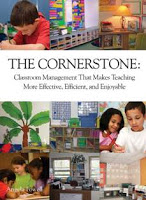
Do you ever wonder what students are taking away from your lessons? Do you question whether they’re internalizing the concepts you’ve taught? Ending your lesson or school day with a ‘quick check’ is a fun way to help students retain what they’ve learned and help you determine what your kids will need the following day. Here are a few ideas that work with a wide range of grade levels:
Informal reflection questions: After you’ve taught your lesson, have students answer a reflection question with a partner or group. You can walk around to hear individual student responses and then call on a select few kids to share their answers with the class. I like to have kids discuss with their teams, and when they hear the bell or clicker sound, one volunteer from each team summarizes what the group talked about. Ideas for questions include:
- When will you use this strategy again to help as you ___ [read, add, etc.]?
- If we had a new student in our class, what would you tell him about __?
- When will you use ___ again when you’re not in school?
3 Things Poster/Calendar:
At the end of the day, have kids work in groups to brainstorm the three most important things they learned that day. Teams can then write their ideas on sticky notes to attach to a poster (or write directly on the poster). You can also use a large desktop-style calendar. This is a good way to help children differentiate between ‘important’ and ‘interesting’, which is a mistake they often make when identifying main ideas and supporting details. Encourage children to focus on the things that they will probably need to know later on. At the end of the month, talk about what you’ve learned. Bind the posters together to make a class Big Book. You can also choose the three most important things for the week and/or month and circle
them.
Learning Timeline:
You can record important classroom events on adding machine paper (yes, they still sell it!) that is taped in a long strip across the wall. Each day, have the class discuss the most important things you’ve done or learned that day, and have a student volunteer write the date and activity on the tape, drawing an illustration to go along with it. You could already have the date written out for uniformity. The assessment value is in the class discussion, but the timeline itself will provide a record of student learning and help children see how they are acquiring new skills.
Exit Tickets:
Also called ‘Your Ticket Out the Door’, these are small scraps of paper that students use to write what they’ve learned after a lesson. Children hand them to you when leaving for lunch, specials, or dismissal. You can change the exit ticket topics to fit the purpose of your lesson. Some prompts I’ve used include:
- How will you use addition to check your work from now on?
- Name the planets in order from the sun.
- How can you tell the difference between a square and a cube?
- Give one fact and one opinion about dogs.
- Name two things you will do differently in writing tomorrow after learning about capitalization.

These ideas are taken from my book The Cornerstone: Classroom Management That Makes Teaching More Effective, Efficient, and Enjoyable. I’m currently running a week-long Black Friday SALEthat’s starting today: free Priority Mail shipping. If you’ve bought a copy from me before and are purchasing this one as a Christmas present or other gift for a teacher you know, I’ll refund five bucks of your total cost. Just let me know in the Instructions to Seller box (you can also specify a personal message to the recipient that you’d like me to write inside the book). [SALE ENDED].

Angela Watson
Founder and Writer
Sign up to get new Truth for Teachers articles in your inbox
OR

Join our
community
of educators
If you are a teacher who is interested in contributing to the Truth for Teachers website, please click here for more information.















